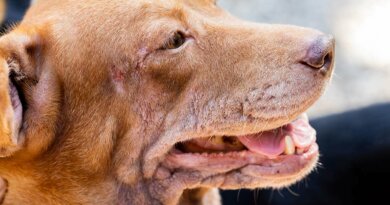‘We Are Winning Some of These Battles’
What your doctor is reading on Medscape.com:
APRIL 03, 2020 —This column was adapted from a Twitter thread, with permission.
I saw my first COVID-19 patient on March 17. A week later, it felt like over half of the new consults were patients with COVID-19. This is a bad disease. These patients are sick and if we make progress, it is slow.
But there is hope. We are winning some of these battles.
Here are some lessons from 2 weeks on the frontlines of Detroit as a nephrologist COVID warrior.
The Cliff Notes version: “evaluate each patient, cooperate with the ICU team, come to consensus and execute as best possible.”
There were case reports from China of COVID-19 being associated with hypokalemia, but we are not seeing it (Figure 1).
[INSERT CHART]
Figure 1. Potassium levels from a COVID-19 patient.
Keep ’em Dry
We are pushing ultrafiltration and diuretics to keep these people dry. When we are able to keep the patients in negative balance, we are seeing the x-rays clear, and the positive and expiratory pressure (PEEP) and fraction of inspired oxygen (FiO2) come down. We see improved partial pressure of oxygen and carbon dioxide (PaO2 and PaCO2) (Figure 2).Figure 2. Week 1 (right) and week 3 (left) x-rays from a COVID-19 patient.
When we go the other way and the patients are consistently in positive fluid balance, they do worse. These x-rays (Figure 3) are from one of these patients.
[INSERT IMAGE]
Figure 2. Week 1 (right) and week 3 (left) x-rays from a COVID-19 patient.
When we go the other way and the patients are consistently in positive fluid balance, they do worse. These x-rays (Figure 3) are from one of these patients.
[INSERT IMAGE]
Figure 3. X-rays 11 days apart from a COVID-19 patient in persistent positive balance.
Over and over we are seeing people present in advanced acute kidney injury, with creatinine levels of 6, 8, 17 mg/dL despite no previous chronic kidney disease. They show up with a creatinine level of 8 mg/dL and a potassium level of 7 mmol/L, and it’s “check-mate, time for dialysis.” I have never started so many people on dialysis on the day of admission.
Continued
This is not the case all over Detroit. I’ve spoken to doctors at other hospitals, and they are not seeing the acute kidney injury until hospital day 7 or 8. I suspect that this difference has more to do with social determinants of health than viral pathology.
Kidney Failure and Clotting
The kidneys and lungs seem to be the two organs most targeted, but that could be my selection bias
The kidney failure does not seem to be just part of generalized multiorgan failure. This doesn’t feel like run-of-the-mill septic acute tubular nephritis.
We are seeing a ton of clotting. We are going through continuous renal replacement therapy (CRRT) cartridges fast. And this clotting is also happening on conventional hemodialysis.
Below are some of the questions I’ve been asked on social media.
Are you pushing for negative urine input/output balance in patients with preserved GFR or also in those on the verge of hemodialysis? How are you setting targets for volume removal via diuretic or ultrafiltration?
I am pushing everyone to be as dry as possible. Whether the GFR is 100 mL/min or zero, dry ’em out.
We have been having major clotting issues on continuous veno-venous hemofiltration despite trying citrate-based replacement fluid and heparin drip. High GFR and replacement fluid rates seem to help. What’s been your experience?
We are pushing to higher and higher heparin dosing.
Are you starting renal replacement therapy (RRT) sooner rather than later?
We are already providing more dialysis than we ever have for the people who need it. We have limited resources. I am reserving dialysis for patients who absolutely need it. Otherwise I’m going to the wall with diuretics to maintain urine output.
Are you using mostly CRRT vs RRT?
It’s about 50-50. A lot of them have intact blood pressure and we are using conventional hemodialysis. Plus, we can only do CRRT if they are in the ICU; if the patients aren’t intubated, there is no room in the ICU for them, so we are forced to do conventional intermittent hemodialysis.
Continued
What characteristics do patients who recover have, compared with the ones who don’t, even when you keep them dry?
I have only one extubation so far. That patient never had terrible vent settings, but the lungs looked bad on x-ray.
Are you dabbling in critical care?
No. I provide guidance on managing fluids, and if I’m gowned up and in the room, I will adjust a vent setting (but only after the pulmonologist says I can).
What types of diuretic strategies are you leaning on—scheduled furosemide (Lasix) vs Lasix drips vs bumetanide (Bumex)?
I am pushing furosemide drips rather than intermittent boluses a few times a day so that the nurses do not need to go into the rooms. I’m using furosemide (creature of habit), but an argument could be made for bumetanide to minimize the volume delivered.
Are you seeing anyone with asymmetric or fully unilateral lung involvement?
Asymmetric lung disease is common. I have not seen unilateral lung disease.
Are you using any particular method to assess for adequate filling status/need for more aggressive diuretic therapy, particularly in patients who become hypotensive (septic shock +/- high PEEP +/- sedation)?
No. I evaluate each patient, cooperate with the ICU team, come to a consensus, and execute as best as possible.
Any thoughts on this being acute tubular nephritis from microthrombi? Have you seen a significant renal recovery with high doses of heparin that are needed to avoid circuit clotting?
I haven’t seen any renal recovery, ie, off dialysis yet.
If you have lessons from the frontlines, please share your experiences on social media using the hashtags #COVID19 #NephTwitter. NephJC is maintaining a COVID for nephrologists living-resource page by scouring the published literature. It is a good clearinghouse of information.
Joel Topf, MD, is a partner at St. Clair Nephrology and on faculty at Ascension St. John Hospital in Michigan. He is a co-creator of NephMadness and NephJC, and hosts the Freely Filtered podcast.




